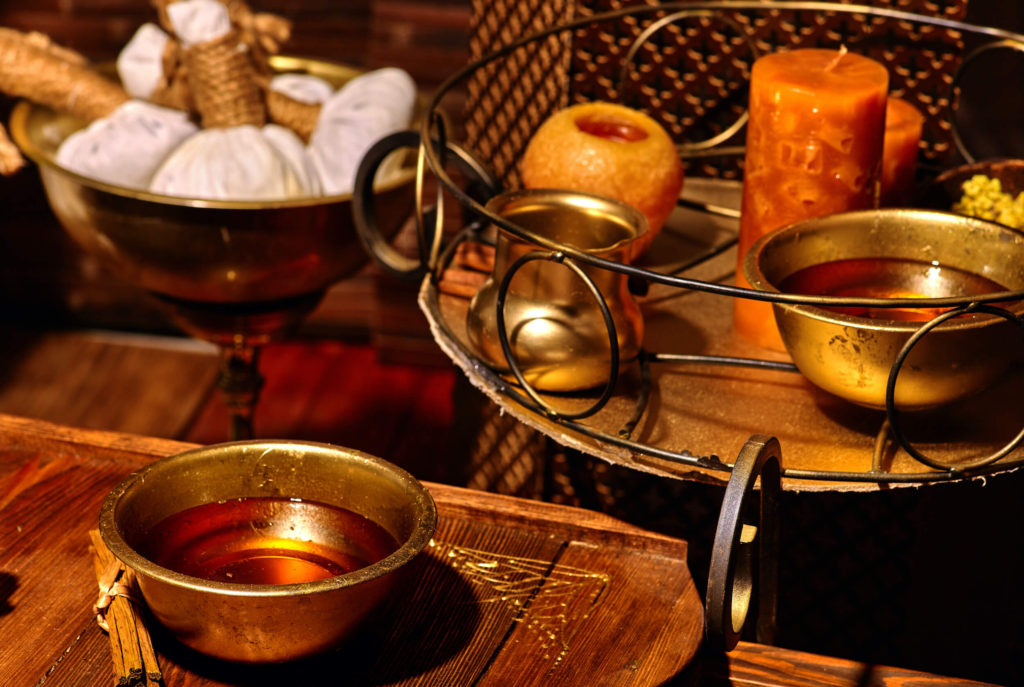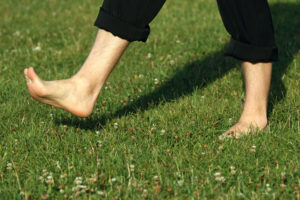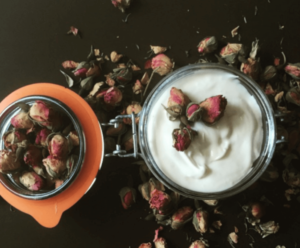Ayurveda is a 5,000-year-old form of medicine originating inside the Vedic culture of India. Both Tibetan and Chinese medicine have their roots in Ayurveda. However, using the word “medicine” to describe Ayurveda is misleading. While used throughout history as a way to treat illness and disease, Ayurveda is much more.
The word itself translates as “Life Knowledge”. Ayurveda’s focus is on balance in all aspects of life, achieving health in body, mind, and spirit. The practice of Ayurveda has many components, from medicine to diet to herbal remedies. Another way to achieve total body balance with Ayurveda is through self-care.
Self-care involves the entire body, inside and out, as well as the mind and spirit. While there are many different forms of Ayurvedic self-care, we have outlined some of the most practiced tasks and rituals below.
AYURVEDIC SELF-CARE

Abhyanga
This is a warm oil massage involving medicinal herbs. This massage lubricates and conditions the whole body, while specific herbs are used to target each person’s individual health needs. Ayurvedic medicine largely uses sesame oil, as it is known to have anti-inflammatory and antibacterial properties. This type of massage benefits the body in many ways: improves circulation, improves sleep, flushes the lymph system, calms the nervous system, increases focus and attention, and cleanses the skin. You can do this massage at home as part of your daily self-care routine.
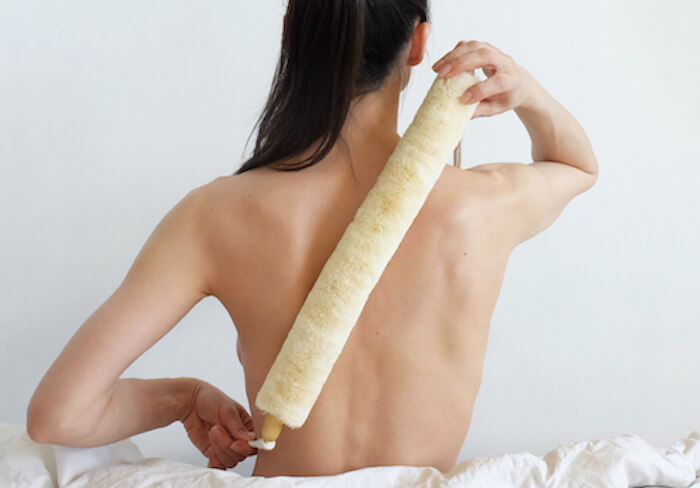
Gharshana
Also known as “skin brushing”, this practice complements the Abhyanga massage. Brushing the skin removes dead particles and stimulates new growth to improve appearance. It also stimulates the lymphatic system, draining away toxins to improve function throughout the body. The best brushes to use are those with natural plant fibers or you can use a coarse loofah sponge. The Ayurvedic practice is to start at the extremities, brushing towards the heart.
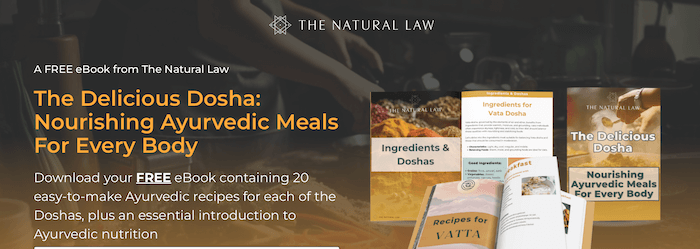
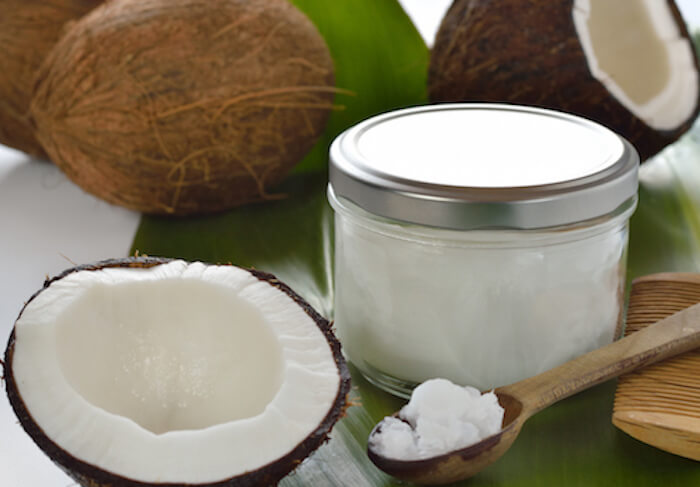
Gandusha
Also known as oil pulling, this practice involves swishing and gargling oil much the same as one would use mouthwash. Coconut oil works well for this practice, as it contains anti-fungal properties. While swishing and gargling, the oil is pulling germs and other unwanted organisms away from the teeth, gums, cheeks, and even throat. For the best results, swishing and gargling should last 20 minutes. However, most people need to start at five minutes and work their way up to twenty. When time is up, spit the oil out and thoroughly brush your teeth.
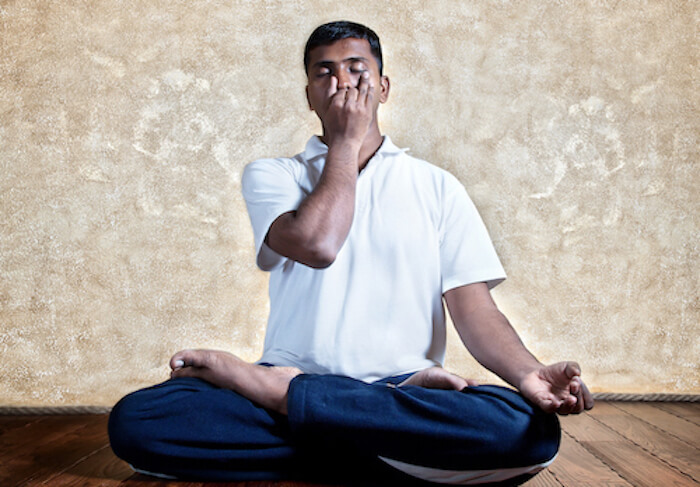
Pranayama
This is a breathing technique often taught in conjunction with Yoga. However, to learn proper Pranayama and receive the most benefits, some instructors teach it separately. The premise of these breathing exercises is to teach the body to relax, heighten one’s awareness of their internal energies and breathing patterns, and then intentionally control their breath and energies. Beyond its ability to help people relax, slow down, and gain peace of mind, Pranayama exercises increase lung capacity and function over time. This increase in oxygen intake and usage benefits all parts and functions of the body.

Drink Hot Water
This may seem oddly simple, but doing this first thing in the morning stimulates the digestive system. Combine the hot water with lemon or lime juice. If you suffer from slow digestion or constipation, adding aloe vera to the water as well will help. This should be done before drinking or eating anything else

Eat Seasonally
While Ayurveda believes that each person contains unique energies, it also states that everyone is dominated by one of three primary “doshas”. For those who have learned their dosha, certain dietary changes will enhance their overall health. However, whether you’ve discovered your primary dosha or not, it is important to remember variety. For optimal health, an Ayurvedic diet focuses on food as fuel and contains fresh, natural choices over processed foods. By learning to eat “seasonally”, you maintain variety by choosing your foods based on what is in season. While those who know their dosha can tweak their diets for optimal health, it is important for everyone to fuel the body with a variety of healthy foods.
There are many other Ayurvedic rituals to add to your routine, but it is best to start small and work new things into your routine over time. Some other Ayurvedic self-care options:
Tongue Scraping
Neti
Meditation
Yoga
Connect with Nature
Rise with the Sun
Project Wellness Now is dedicated to providing a portal for natural and holistic information and building a community of individuals searching for the same peace and balance in their lives. Please join us on your path to a healthier life.
YOU MAY ALSO LIKE:
HOW TO OPTIMIZE YOUR BRAIN NATURALLY
Have you ever forgotten a word or someone’s name that you should know? It happens to all of us. It indicates…
THE IMPORTANCE OF OFF DAYS IN YOUR WORKOUT WEEK
By Kevin Jones Personally, I found it tough to take rest days for a long time. I’m a runner, and I…
AMAZING BENEFITS OF “TRUE” COLLOIDAL SILVER
Will the true colloidal silver please stand up? Read more to find out how to sniff out an imitation, ineffective silver…
5 FASCINATING HEALTH TRENDS OF 2020 & PREDICTIONS FOR 2021
By Tess DiNapoli This year, more people are focusing on their health and wellness than ever, and there are some exciting new…
HOW GROUNDING KEEPS US HEALTHY AND GROWS OUR JOY
Remember running around the yard barefoot on the grass as a kid, feeling the warm earth beneath your toes? As it…
DIY FRANKINCENSE ROSE CREAM
Make this easy DIY frankincense rose face cream with all organic, natural ingredients. Your new, well-nourished skin will thank you! INGREDIENTS:…

